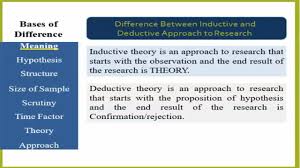The deductive method, deductive reasoning or deduction is a concept used in several areas and is related to the different ways of reasoning.
It is an information analysis process that leads us to a conclusion. In this way, deduction is used to find the final result.
The deductive method was already used in antiquity. The Greek philosopher Aristotle contributed to its definition through what became known as Aristotelian logic, which in turn is based on the syllogism doctrine.
This is because since Aristotle, necessary conditions have been found for true propositions, so that, finally, true conclusions can be reached.
This method is generally used to test already existing hypotheses, called axioms , to thus prove theories, called theorems . For this reason, it is also called the hypothetical-deductive method .
It is worth noting that the deductive method is used in philosophy, scientific laws and education. We use this type of reasoning to solve problems, for example, physics and mathematics.
When the teacher demonstrates a problem on the blackboard, he is using the deductive method. This is because it starts from a universal proposition, and through logical reasoning, arrives at a valid conclusion.
Thus, in this type of logical reasoning, a conclusion is reached from the premises. Thus, the inductive method is considered “restricted or not very broad”, as it does not add new information to the conclusion, since it arises from what was already implicit in the premises.
Example
To better understand the application of this method, let’s analyze the example below:
- Premise 1 : Crime suspects were in the room between 1 pm and 2 pm.
- Premise 2 : João was not in the room between 13 and 14 hours.
- Conclusion : Therefore, João is not one of the criminal suspects.
Deductive and Inductive Method
Both the deductive and the inductive methods are two types of reasoning used to analyze whether information is valid or not.
Thus, through assumptions and propositions, it is analyzed whether there is a valid conclusion to what was stated. All of this, if the premises are true.
- Deductive method : this argument is made from the largest to the smallest , that is, from one general premise towards another, particular or singular. The conclusions found in this method were already in the premises analyzed previously and, therefore, it does not produce new knowledge.
- Inductive method : this reasoning goes from the smallest to the largest or from a singular or particular premise to another, general one. Unlike the deductive method, where the conclusion is implicit in the premises, here, its conclusion goes beyond these statements. Thus, the inductive method is broader and is widely used in science.

